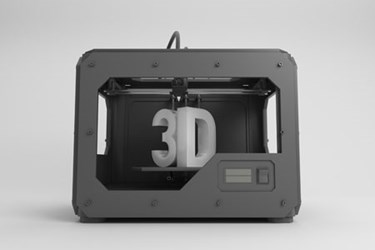3D Printing To Take Us Beyond Our Wildest Imaginations

By Christine Kern, contributing writer

The 3D printing global market is predicted to hit $16.2 billion in 2018.
Market research firm Canalys predicts the global market for 3D printers and services will grow from $2.5 billion in 2013 to $16.2 billion in 2018, a compound annual growth rate of 45.7 percent. And SearchCIO columnist Harvey Koeppel writes we have only seen the tip of the possibilities’ iceberg.
“This is a market with enormous growth potential now that the main barriers to up-take are being addressed,” said Canalys Senior Analyst, Tim Shepherd in the forecast. “Advances in technology are yielding faster print times and enabling objects to be printed in greater combinations of materials, colors, and finishes. Crucially, prices are also falling, making the technology an increasingly feasible option for a broad variety of enterprise and consumer uses, restricted only by computer aided design competencies and printer availability — both of which are set to improve significantly.
“3D printing has become an established technology for producing prototypes and concept models of all manner of products. But as it matures, there is clear and substantial potential across numerous sectors, such as engineering and architecture, aerospace and defense, and medical (particularly in the fabrication of custom prosthetics), for 3D printing to have a dramatic impact within five years.”
According to Koeppel, current appraisals “vastly underestimate the potential impact of 3D printing technology and its inevitable derivative technologies.” 3D printing is currently being developed and used in industries from aerospace to architecture, commercial manufacturing to medicine and healthcare.
3D printing technology is primed to disrupt almost every major industry and alter the way individuals live, work, and play in the future, according to Tech Republic, but the technology does not just change the production of objects; it also brings great changes in other areas as well.
Koeppel points out, “In many ways, 3D printing brings to commercial manufacturing what Agile methodologies bring to the IT application development process. Prototypes can be created, evaluated, modified, and reconstructed; and fully integrated products can be brought to market in significantly less time and cost with fewer resources. Shorter time to value, less expensive and higher quality products are predictable outcomes. It is not difficult to imagine how the manufacturing supply chain as we know it today will be, over time, fundamentally changed forever.”
And the changes are more spectacular in health sciences and medicine, where 3D printers are now producing all types of human tissue and organs, including bones, heart valves, patient-specific sensors, prosthetics, and tissues with blood vessels.
The expanding use of 3D printers and associated scanners and peripherals also means they are connected to networks and have associated cyber security risks that need to be proactively addressed. 3D printer applications also require and/or generate new sources and types of data that needs to be evaluated, catalogued, assessed, and integrated into enterprise and departmental data management policies, procedures, and methodologies, creating a host of opportunities and challenges. Particularly for the health fields, where regulated information is involved, data privacy and information security become paramount.
Koeppel also points out 3D printing can raise certain ethical or moral implications of 3D printed products and services, particularly in health-related or public infrastructure applications. We are entering a brave new world of 3D printed reality, and it is stretching the limits of possibility beyond the imagination.
